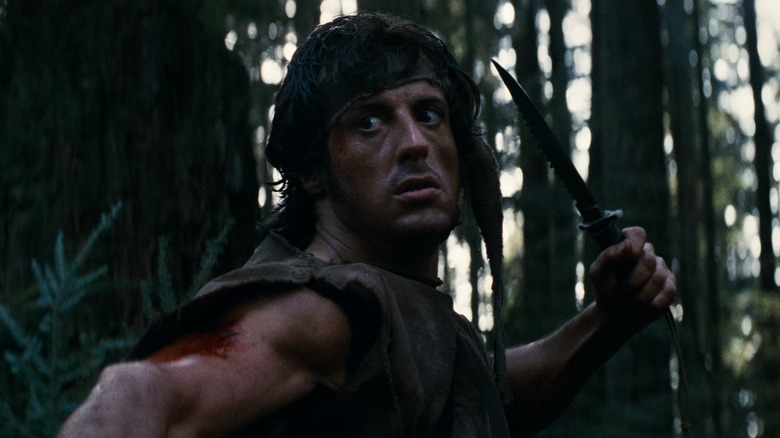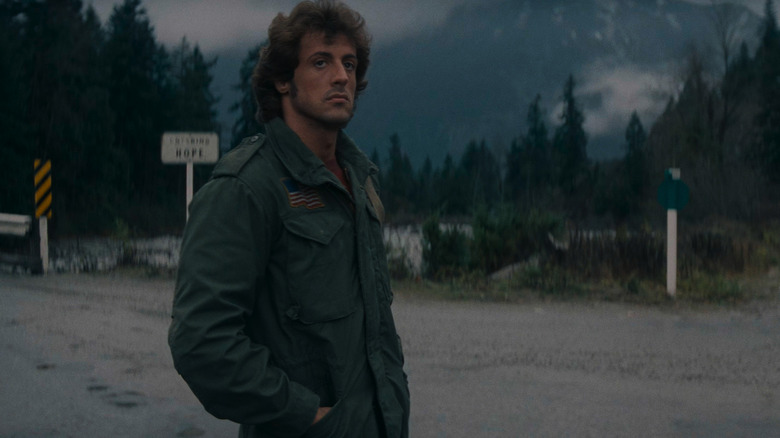The Dark Rambo Alternate Ending You Likely Haven't Seen
The character John Rambo has appeared in five Sylvester Stallone films, and during his heyday as an '80s action icon, he even had his own animated series and toy line. However, if "First Blood" director Ted Kotcheff had gone with his original plan, Rambo might have been a one-and-done.
Quentin Tarantino isn't the only filmmaker who's envisioned a Rambo movie that would be closer to David Morrell's novel, "First Blood." In the book and Kotcheff's 1982 film adaptation, Rambo is a troubled Vietnam vet who wanders into a small town and faces persecution from the local sheriff.
As Kotcheff told Entertainment Weekly, "The quintessential American town Rambo finds himself in was emblematic of the whole United States." Rambo's plight was that of all veterans, coming home from the war, only to be regarded as "losers" on one side and "babykillers" on the other side of the political divide.
The late Brian Dennehy played the sheriff, Will Teasle, in the movie, which followed the book's storyline up to a certain point: having Teasle arrest Rambo for vagrancy and having Rambo flashback to being a POW, before going berserk as deputies try to shave him. He escapes and becomes the target of a manhunt. But in the book, Rambo dies, unlike the film franchise, where he lives to fight again another day and kill a whole bunch of people across four sequels.
Kotcheff's original film ending would have also shown Rambo die, mirroring the tragedy of other real-life veterans by taking his own life.
Rambo's Death Scene
Kotcheff said he "conceived of 'First Blood' as Rambo's suicide mission." That's how it was planned up until the day they shot Rambo's death scene with Colonel Trautman (Richard Crenna). You can find uploads of that scene on YouTube, but they aren't the best quality. Here is how Kotcheff described it to EW:
"We came around to do the ending. [Rambo is] surrounded by the army, and by the police. He's in the police station. The Colonel comes in there to put him out of his misery. [Rambo] says, "I know you have a gun underneath your jacket there. You created me. Now, you have to kill me." And he pulls out the gun. But he can't do it, of course. But Rambo reaches out, presses the trigger, and blows himself away."
After filming this ending, Stallone (who co-wrote the script) took Kotcheff aside and suggested that Rambo had been through too much abuse for them to let his story end with a grim act of self-immolation. As Kotcheff noted, Stallone had his own "populist sense" of filmmaking. This is something that Stallone applied to his screenplay for "Rocky," which he approached as a crowd-pleasing drama and which he still considers a drama, not a sports film.
They decided to shoot another ending that day where Rambo lives. When they did a test screening with "the original hara-kiri ending," as Kotcheff called it, audiences who had otherwise enjoyed the film were unanimous in their dislike of that ending. They agreed with Stallone, so the filmmakers went with the ending where Rambo lives.
While "First Blood" still doesn't have what you would call a happy ending, it's at least a little happier (and more open to sequels) than it could have been.

